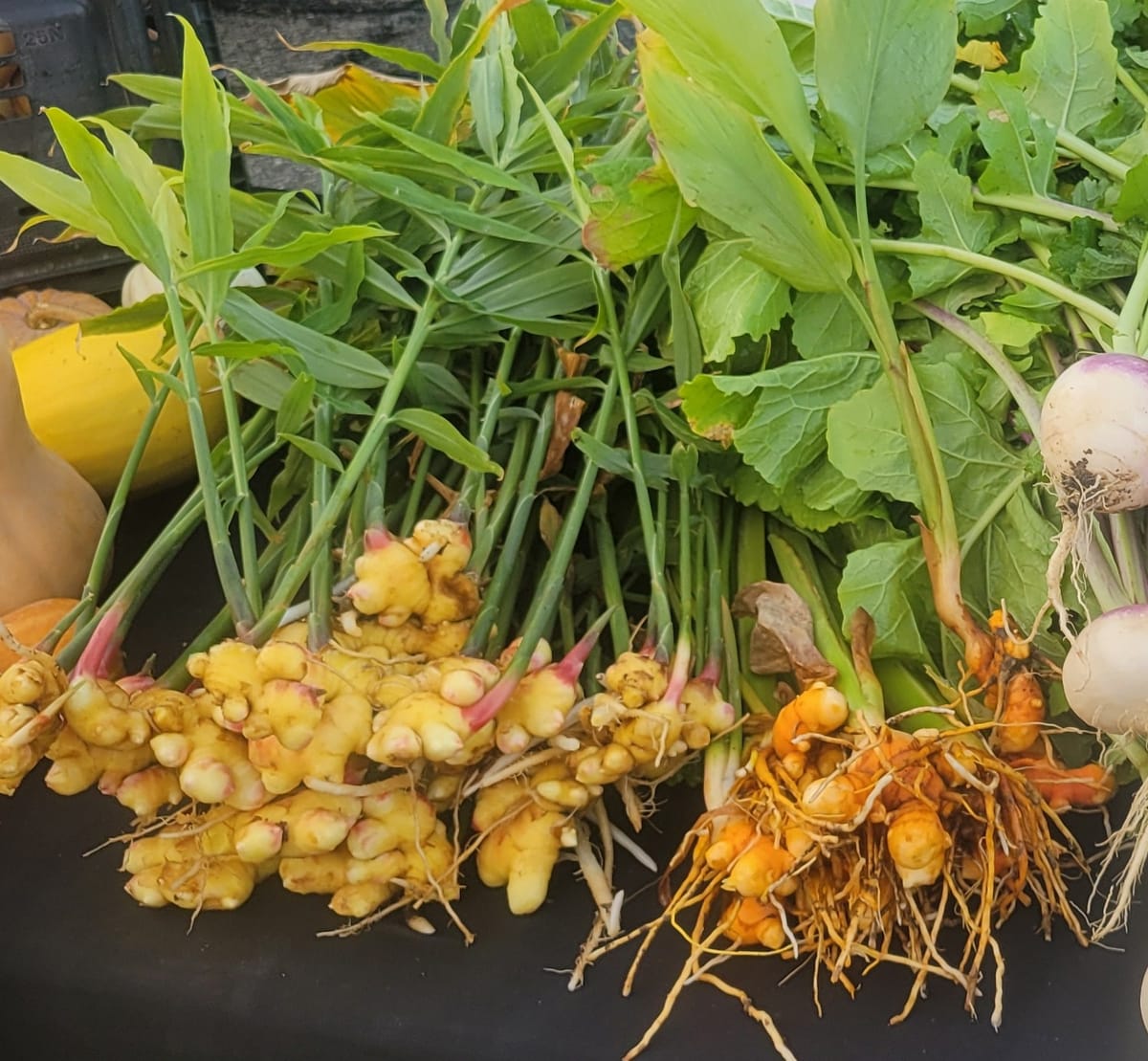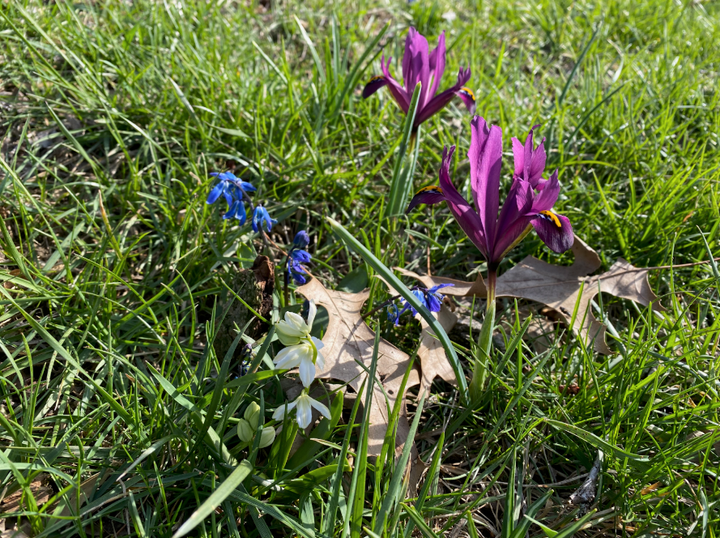On My Plate: Ginger and Turmeric
Turmeric gets my vote for the most polarized edible item I’ve ever featured here.

The least recognizable product at Oxford’s Farmers Market this time of year is fresh turmeric at the 7 Wonders Farm table. A year ago, I wrote that fresh ginger elicited the most “what is it” questions at the market, but this year ginger ranks second to its table mate – fresh turmeric.
Fresh ginger and fresh turmeric roots have very similar appearances – rough earth-colored knobs topped with thin stalks. Earlier in the season, the stalks held wispy leaves, but they have been cut off as the season nears the end.
The turmeric root is a bit brighter in color than the ginger root. “In its raw form, turmeric root looks like an ugly little cousin of ginger root,” wrote Anna Stockwell in “Epicurious” in 2015. Fresh turmeric must have been a passing fad a decade ago, because several stories appeared back then, including on the PBS website.
The ginger knob in American supermarkets is mature and imported from Asia, with a thick, tough skin that must be cut away, revealing a fibrous flesh. In contrast, the fresh young ginger, locally available this time of year from 7 Wonders Farm, has a thin skin that is easy to peel. Compared with mature ginger, the flesh of the local ginger is much milder and more tender. I’ve never seen turmeric root in an American supermarket, so I can’t compare to the local variety.
The inside of the turmeric is bright orange, rather than pale like ginger. Ground turmeric is one of the foundational spices combined into “curry” powder, and it is responsible for the powder’s yellow color.
The best way to take advantage of our local young roots is to thinly slice or mince them and to sprinkle over almost anything. Young ginger spreads a warm mellow flavor, much less sharp and harsh than the mature variety. Turmeric root combines ginger’s earthiness with a sharper mustard taste. I have been adding them on top of grilled fish or into a pan of sauteed vegetables.
Turmeric gets my vote for the most polarized edible item I’ve ever featured here. According to the internet, consuming turmeric is either beneficial or harmful. The National Institutes of Health (NIH) website states “while having a long history of safety, some turmeric products have recently been implicated in several dozen instances of clinically apparent acute liver injury.”
For thousands of years, turmeric has been an important component of India’s ayurvedic medicine practice. The website of the California College of Ayurveda (CCA) calls turmeric “the golden goddess.” Turmeric is “a powerful anti-inflammatory, the effectiveness of which is comparable to pharmaceutical medicines,” according to CCA.
The two sides at least agree that curcumin, which is the major component of turmeric, and the source of the distinctive yellow color, deserves the credit or blame for the health benefits or warnings.
My principal piece of advice regarding our fresh local ginger and turmeric is to use them quickly. The soft root that doesn’t need peeling when brought home from the Farmers Market on Saturday will turn darker and require peeling by midweek, the 2-foot-high stems will start to bend over, and the leaves will start to wilt. The internet advises storing them in the refrigerator, but candidly the ginger and turmeric roots remain in a small bowl on my kitchen counter, along with a bulb of local garlic. This may be a case of do as I say, not as I do.
James Rubenstein is president of the Board of Directors for the Oxford Free Press and professor emeritus of geography at Miami University.




